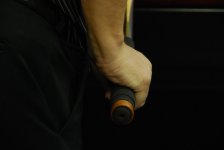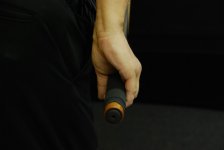If you don't look at the resources on the swoop/swipe stroke page, you will not see why some of your ideas are considered flawed by some people. But I can't force you to look at my stuff.I long ago quit looking at anything at your site, a matter of personal ethics.If you are saying what I think you are saying, this is a common misconception that is debunked here:
getting more spin with a swoop/swipe stroke?
I'm not sure what you mean by "stole." If I quoted and cited something you wrote on this public forum, that certainly is not "stealing."I have owned quite a bit of intellectual property over the years, had some stolen including a few paragraphs of mine you stole. What you stole wasn't exactly top secret so I didn't care.
FYI, I just searched for your name on my site, and the only quote from you I could find is here:
pool cue ferrule
If you prefer not being quoted on my site, please let me know and I will be happy to paraphrase the points in my own words instead and remove mention of you on my site.
When PJ, others, and I refer to "tip contact point" or "tip offset," it is relative to the cue direction and center of the CB. I think this explains much of the misunderstanding. For more info, see the illustration on the following page showing how the "tip offset from center" is different based on the angle of the cue, for the same contact point on the CB:As for the theory angle doesn't matter, use a striped ball with the stripe vertical to give a nice target. place your bridge hand inline with the edge of the stripe and hit the ball. Now move your bridge hand six inches over to the opposite side from where you were hitting the cue ball. Can you still hit it in the same place without a miscue? Surely you can if angle doesn't matter.
...
Even pj grasps that different angles create different squirt. If angle didn't matter squirt would be identical.
cue elevation and angle effects on effective "tip contact point" and "tip offset from center"
Regards,
Dave

